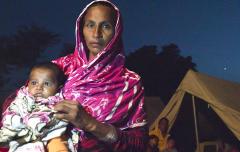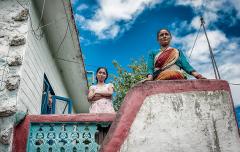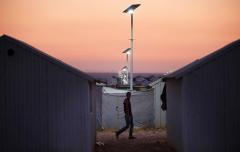First ever global analysis of refugees’ energy use: High costs and poor supply undermine humanitarian assistance
About 90% of refugees living in camps have no access to electricity and many lack any form of lighting at night, says a Chatham House report for the Moving Energy Initiative. Energy poverty in refugee settlements is not on the radar of international initiatives and humanitarian agencies are ill-equipped to deal with the scale of need.
Heat, Light and Power for Refugees: Saving Lives, Reducing Costs zooms in on the energy needs of refugees and displaced people worldwide, and presents the first ever estimates of the volume and costs of what they use. "The problem goes beyond electricity. 80% of those in camps rely on firewood for cooking and, as a result, we estimate that some 20,000 people die prematurely each year due to the pollution from indoor fires. Exposure to extremes of cold and heat are also killers for people living in flimsy, temporary shelter," says Glada Lahn, senior research fellow at Chatham House. "The current lack of provision for energy undermines the fundamental aims of humanitarian assistance," she adds.
There are nearly 60 million forcibly displaced people in the world, and they pay staggering costs for energy. The 83,277 households living in Dadaab in Kenya, the world’s largest refugee settlement, spent an estimated $6.2 million on firewood last year, which accounts for approximately 24% of their overall household income. (The average UK household spent 4% of its income on energy in 2011.) In Uganda, almost half of refugee households surveyed by the UNHCR skip meals because they do not have enough fuel to cook with.
"The imperative is to find humane, creative and cost-effective ways to respond to the needs of so many individuals, most of whom are women and children. Improving access to clean, safe and sustainable energy offers a promising way forward," says Kofi Annan in the report’s foreword. The report calls for an overhaul in the way that heat, light and power are delivered in humanitarian crises. It makes the case for new partnerships between humanitarian agencies and private providers to increase clean energy access in refugee settlements. Investment in energy infrastructure will also benefit host communities in some of the world’s poorest countries.
"As refugee households spend approximately $2.1 billion on energy each year, developing local markets for energy services could be part of a mix of solutions," adds Lahn. "Using green, culturally appropriate technologies could save lives, reduce CO2 emissions by 11 million tonnes per year and radically improve living standards. Introducing even the most basic solutions, such as improved cookstoves and basic solar lanterns, could save $323 million a year in fuel costs." Other findings include:
- Rape and violence against women is common in many unlit camps. Only 4% of women and girls in households in the Goudoubo camp in Burkina Faso would go out after dark due to the lack of streetlights.
- Wood equalling around 49,000 football pitches worth of forest (64,700 acres) is burned by displaced families living in camps each year, mainly in countries suffering severe deforestation, because they have no alternative sources of energy.
- Firewood consumption emits nearly twice as much CO2 as liquid petroleum gas and produces little energy in comparison to its carbon intensity.
Download the publication here


